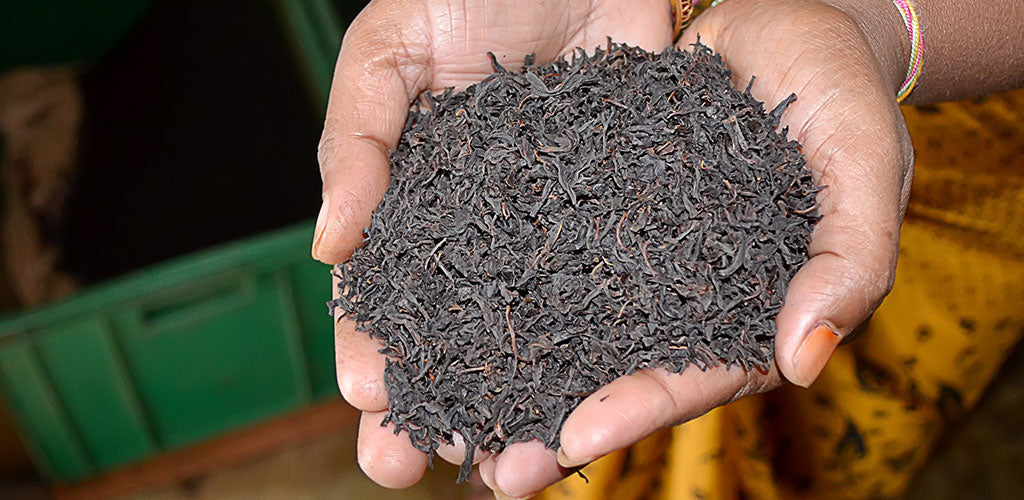Four things you probably didn’t know about black tea

Black tea has an image problem. It’s something people still associate with dusty teabags that need milk and sugar for added flavour. Yet in the world of black tea, there are so many single origin blends that naturally exude the sweetness and butteriness the palate craves in a good cuppa.
Recently, I was honoured to be included on the panel of judges for the Black Tea category of The Golden Leaf Awards. The diversity of teas presented for judging reminded me just why it remains so enduringly popular: because it is so versatile. From blends to single-origin teas, black tea has a diversity of flavours to explore and experiment with.
After tasting some of the best black teas on the Australian market and spending time with the judging panel (AKA Australia’s leading black tea experts), my mind was in overdrive. So I wanted to share some of my favourite black tea facts and resources with you.
With consumers now looking for premium and interesting teas, it is time to look at different ways of marketing, blending and sourcing black teas. From ancient wisdom to new teas coming onto the market, there’s always something to learn about black tea.

Judging panel in action at The Golden Leaf Awards
1. In Chinese medicine, black tea is classified as yang
Tea is deeply ingrained in Chinese medicine, which classifies black tea as yang; meaning it has warming energy. Green tea, conversely, is classified as yin, which is cooling.
This means that black tea is not only a warming brew for the winter months, but it also brings balance to those who have yin energy. So, for example, if you are prone to feeling the cold, you have yin energy and warming black tea will bring you balance.
2. More countries are starting to produce black tea
You’ve heard of India’s Assam, China’s Keemun and Sri Lanka’s Ceylon tea, but there are a number of amazing new tea producers entering into the market – and they are creating remarkable premium teas in countries you may not expect.
Colombia, Peru, Indonesia, Nepal and Taiwan are among the countries now producing high-grade black tea. The teas coming out of Taiwan have an interesting honeyed sweetness to them, while those from Peru are deliciously chocolately.
I am constantly sampling these teas in search of new finds to import, and there are so many great new teas being produced. With consumers starting to look for gourmet teas and gaining a better understanding of tea’s origins and terroir, there is a growing market for specialty teas such as these.
Is there a tea you’d like to source and import? Let us know.
3. Seasonal harvests affect flavour
Even a single type of black tea can possess a completely different flavour profile depending on when it was harvested.
Take Assam as an example. The second spring flush of Assam tea is prized for its full-bodied flavour and maltiness, while the autumn flush is produces a lighter medium-bodied tea with fruit and floral characteristics. This creates two completely different teas from the same tree.
When sourcing teas, it’s important to understand how season affects flavour profile so you can either achieve consistency with your product or weave the different flavour profiles into stories for your customers.
The Tea Flavour Wheel is one of my favourite tools for detecting the aromas and flavours of different flushes of tea. Typical black tea flavour profiles are woody, malt, honey and smokey. For blending and food pairing, complementary flavours include spices, chocolate, citrus and berries (which is why it works se well as a base for intensely flavoured teas such as chai).

When tasting new black teas or developing product descriptions, start in the middle of the wheel and work your way out to realise the various elements at play.
4. Black tea’s exact origins are still shrouded in mystery
Everyone loves a good story, and there are plenty associated with the discovery of black tea.
Tea was first discovered in China and for many thousands of years, only a very rough green style of tea was produced. Legend goes that sometime in the 17th century black tea came to be when a tea factory in the Fujian province accidentally left their tea leaves out in the sun for too long, causing them to oxidise. Why was the tea neglected? Because an army passing through the province decided to take shelter at the factory (a reasonable excuse for distraction, I guess).
Some stories of the first black tea end here, while others claim that the tea was then placed over fire to save it, and what we now know as Lapsang Souchong was created.
As for how black tea arrived in the West is also disputed. Some say that the tea was intentionally oxidised to travel better, while others claim that the tea accidentally oxidised during the long transit. Either way, black tea was the first type of tea to make it to the West, hence the ongoing popularity of this type of tea across Europe, the USA and Australia.
– EXPLORE BLACK TEA –
- Teavision Team
Comments 0